USAF Tankers and Transports
Some of the busiest aircraft in the USAF enable the force to maintain its global reach, these types have a mix of regular, reserve and Air Guard squadrons which are virtually interchangeable in their capability. Most squadrons belong to AMC but there are some which are forward deployed in PACAF, USAFE and other areas as required.
An important feature of all tankers is the refueling method: Probe or Drogue? Probe type refueling has a fixed boom that an operator maneuvers to mate up with the receiving aircraft, this method is primarily used by the USAF. Drogue refueling is where the tanker trails a ‘basket’ and the receiving aircraft flies a receiver probe into that basket, this method is used by the USN and most NATO countries. By 1994 the USAF tanker fleet could conduct either type of refueling but the KC-135 needed some reconfiguration to do so and pilots called the drogue basket on a KC-135 the ‘Iron Maiden’ as it didn’t have much flexibility and could easily break an aircrafts probe causing a scrubbed mission.
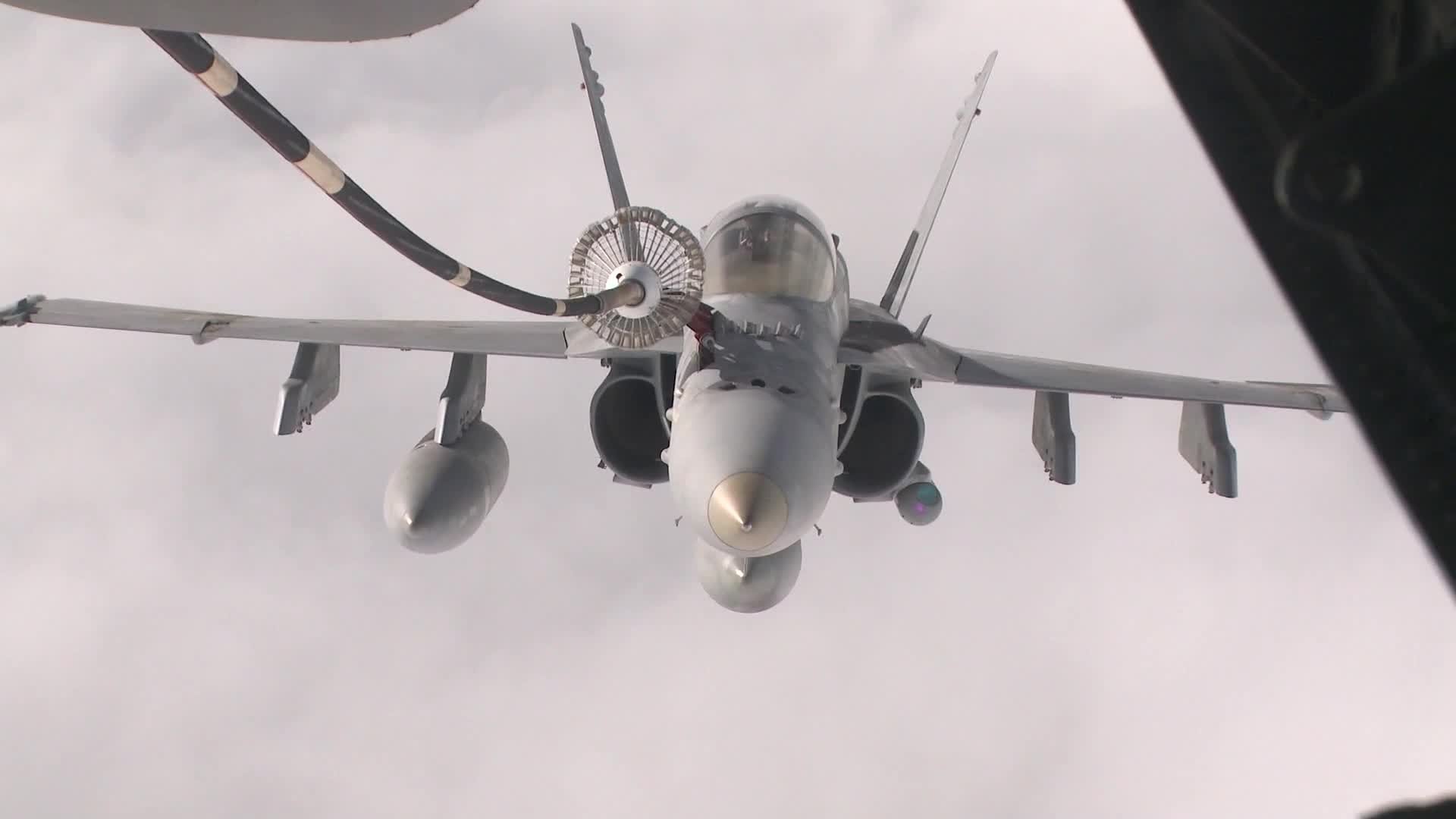
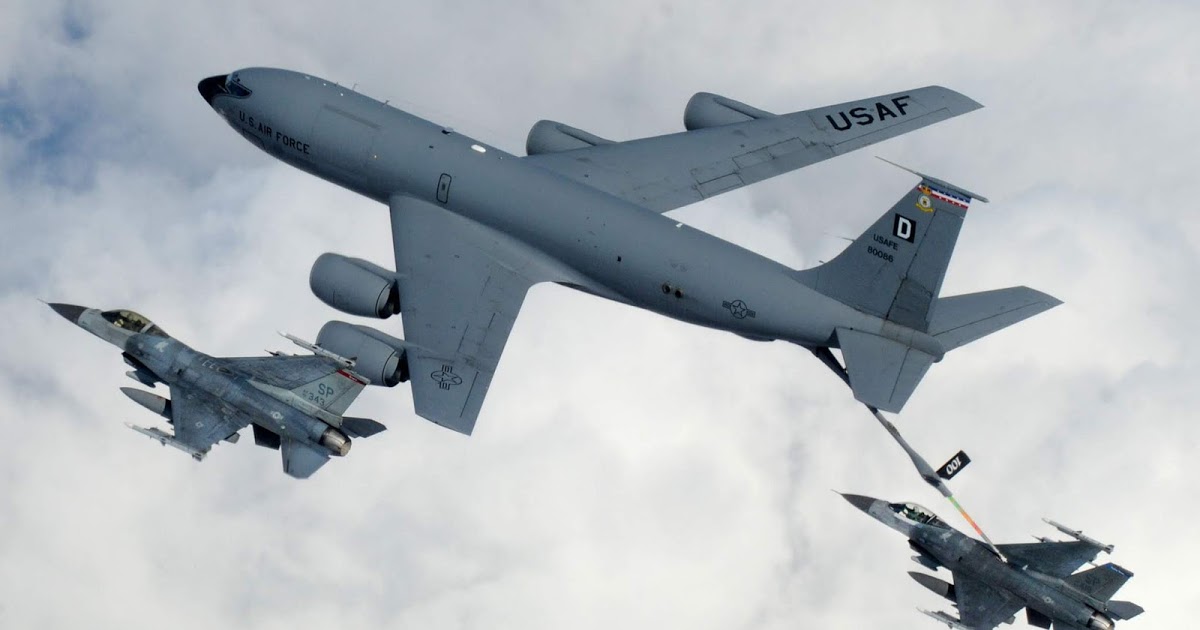
Probe refueling of an F-16
Based on the commercial DC-10 airliner this extremely successful Air to Air refueling tanker proved its superiority during the Gulf War, so much so that in Northern Fury an additional 15 were ordered, bringing the fleet to 75 aircraft. In addition to carrying double the fuel storage as the more numerous KC-135, the Extender can carry 75 passengers and 170,000 lbs of cargo as well. The versatility that results is that one KC-10 can enable a squadron of fighter aircraft to deploy to Europe along with key squadron personnel and equipment, ready for almost immediate operation. This aircraft can nearly double the range of the massive C-5B transport. A KC-10 can conduct both Probe and Drogue fueling on the same mission and change methods in flight. The Extender is operated by 12 Squadrons, all within AMC with a mix of regular and reserve crews.
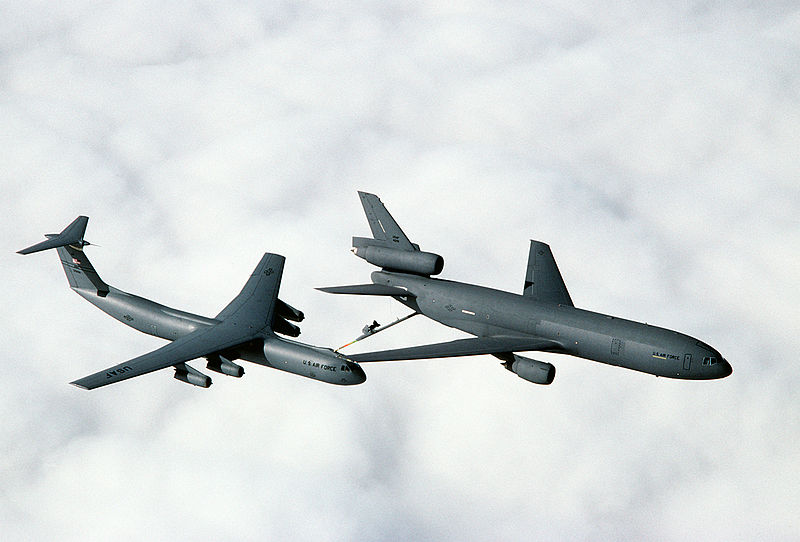
The Stratotanker first flew for the USAF in 1956 and is based on the Boeing 707 airliner design, it can carry fuel or passengers and cargo but its primary job is fuel. Various upgrades have occurred over the 40 years of service with the latest model being the KC-135R which, because of better engine performance and efficiencies uses about 25% less fuel itself, allowing for more to be transferred to other aircraft. By 1994, 420 of the ‘R’ model were converted from older Boing 707s retired from passenger service and 161 older KC-135As were upgraded to a similar standard for the ANG and AF Reserve, designated the ‘E’ model. About 100 of the late production ‘A’ models remain in service as well. A specialty version was able to carry JP-7, the fuel required for the SR-71 High Altitude Reconnaissance aircraft, 56 KC-135Q or the more modern ‘T’ models are located around the globe, the standard KC-135s carry JP-8 the standard jet fuel used by the USAF, USN and NATO. In total the 680 airframes operating in 1994 are employed by 70 squadrons around the globe and flown by regular, ANG and Air Reserve crews to meet constant operational demand. There were about 10 C-135 and seven C-137, which were a pure cargo version of the 707, these were used as the bases for modification to create specialty aircraft such as J-STARS.

The C-5 is the largest aircraft in NATO’s inventory and it is only slightly smaller than the Soviet An-124 Condor. The massive belly of the C-5 can fit every piece of equipment in the US Army, even the bulky M60 AVLB (Armored Vehicle Launched Bridge). With a payload capacity of 291,000 lbs, this aircraft is in extremely high demand; it can carry two M1A2 Abrams Main Battle Tanks, 10 USMC LAV-25s or 7 UH-1 helicopters. In addition to cargo there is a passenger area that seats 73. Its impressive range of almost 6,000 miles can be increased by mid-air refueling. Original production of the C-5A was 77, followed by another production run of 50 C-5Bs with improved engines, avionics and reliability. By 1994, there had been seven crashes leaving a total of 120 airframes operated by 13 AMC/ANG/Air Reserve squadrons, all are upgraded to the ‘B’ standard.
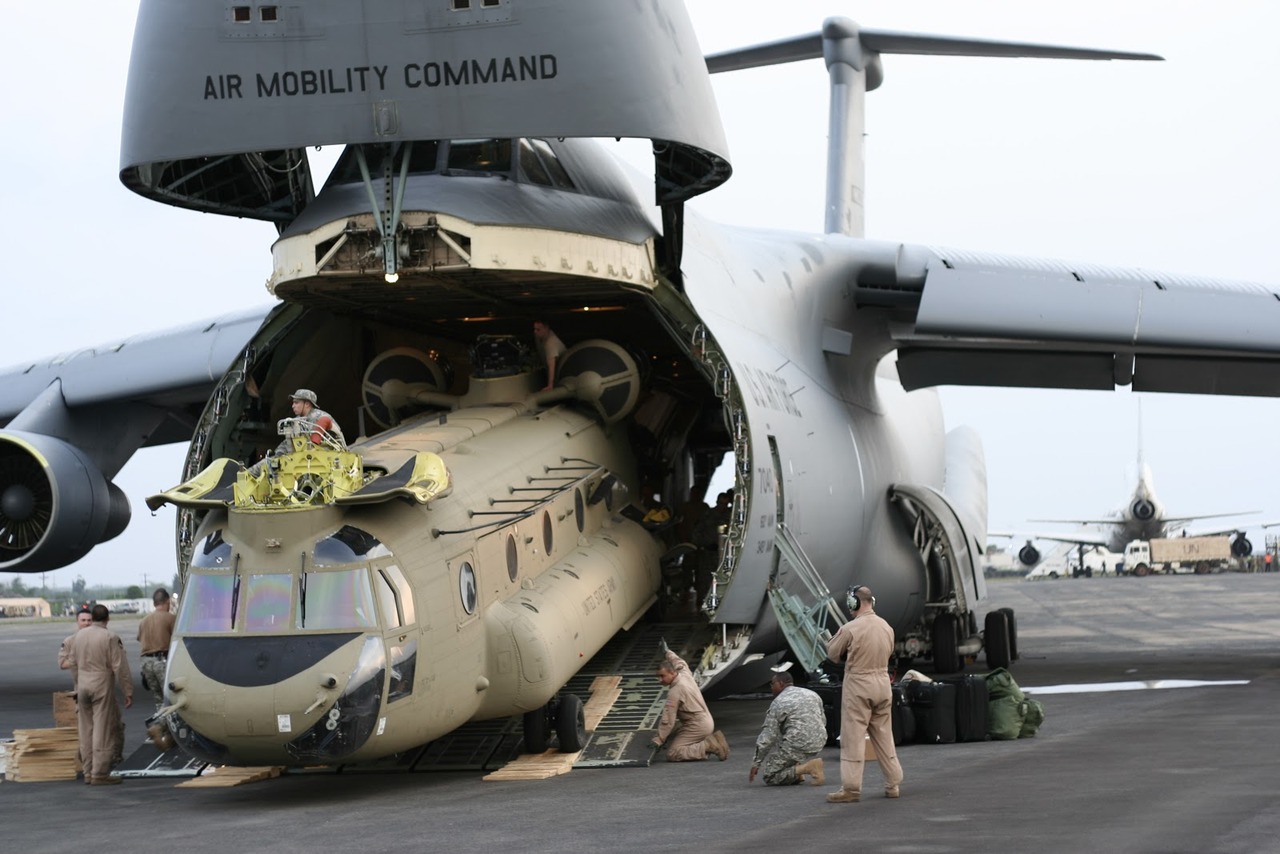
C-141B StarlifterA companion heavy lifter to the C-5, the more numerous Starlifters tended to move larger amounts of less bulky equipment, personnel (200 passengers) and bulk cargo (with a pallet loading system), leaving the large equipment to the Galaxys. The C-141 was also the first jet aircraft used by US paratroopers, and holds the record (in 1994) for largest parachute cargo drop of 70,195 lbs. The ‘B’ model was a lengthened version of the original production aircraft because it was found that the cargo space was too small to achieve the maximum cargo weight – in other words the original tended to ‘bulk out’ before it reached it carrying capacity. The lengthened ‘B’ model did the same but to a much reduced extent, and once the entire fleet was upgraded it effectively adding 90 aircraft worth of carrying capacity to the fleet. The 270 aircraft are operated by 30 squadrons, half of them in the Air Force Reserve.
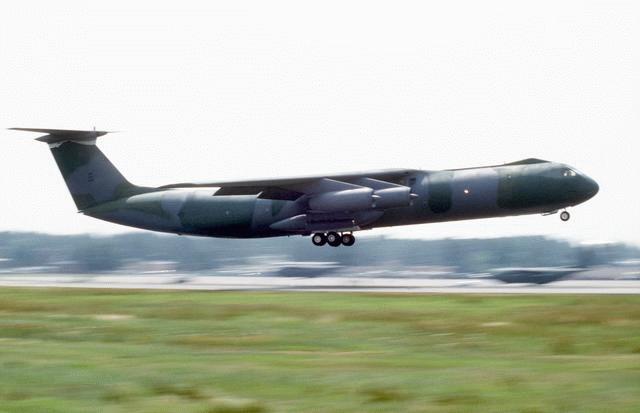
Historically the C-17 had a controversial and difficult evolution, it was caught up in the budget slashing days of the late ‘80’s and early ‘90s but has since become the mainstay of long distance heavy lift transport throughout NATO. In Northern Fury the original plan to procure 210 aircraft was not changed and the budget slicing did not occur to the same extent. As a result, the C-17 met its production timeline, the original design of the wing was retained and therefore did not fail its acceptance tests and by 1994 the 17th Airlift Squadron at Charleston AFB has 12 operational Globemasters. The associated 317th Air Reserve Squadron also has 5 aircraft and is conducting training and certification on these in early 1994. The C-17 fits a middle of the road niche within AMC, its cargo capacity for weight falls between the C-5 and the C-141, it can only carry half the passengers of the Starlifter but will fit bulkier cargo. Where the Globemaster shines however is on small runways where its reversible engines add a high degree of flexibility.
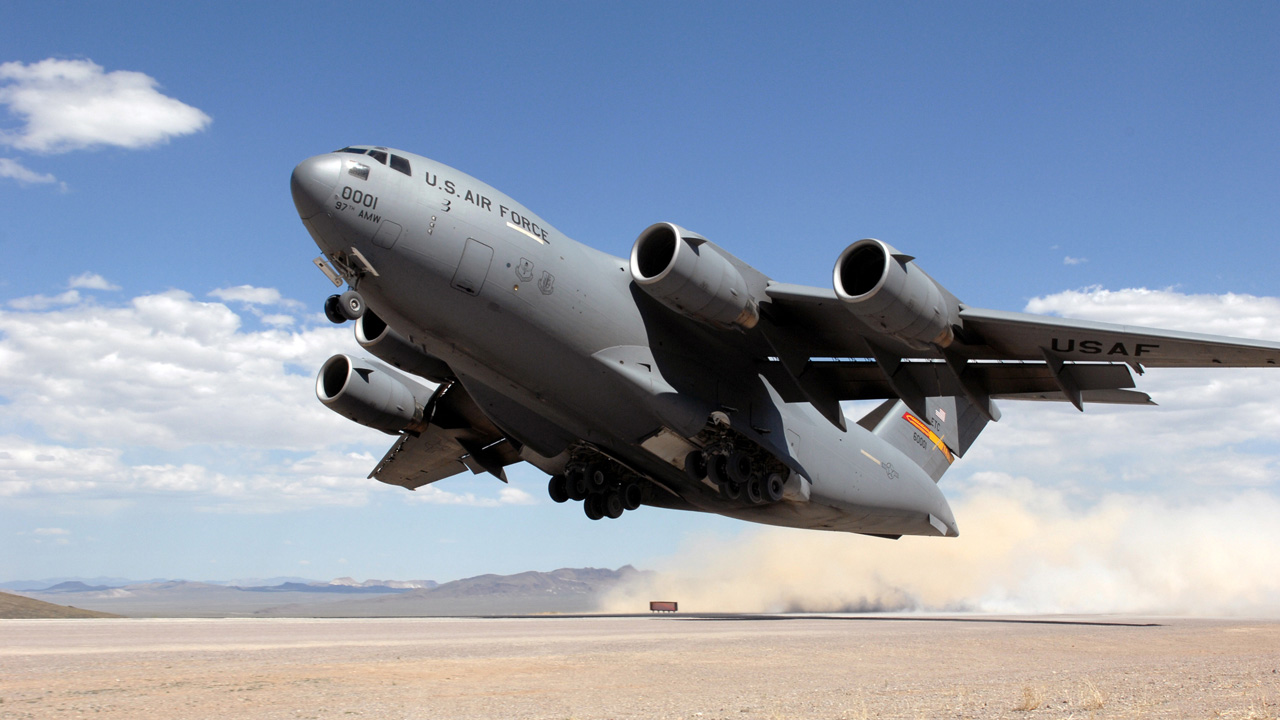
The ubiquitous Hercules is the mainstay of the tactical transport fleet. In all, over 40 models of this aircraft were used by the USAF, many of them detailed at the link above or here, or on the wiki. Only counting C-130 transport variants, the USAF in Northern Fury operate about 670, C-130E/H/H3 and several other minor versions in 32 regular, 20 ANG, and 16 reserve Squadrons. Squadron size varies from 4 to 24 with most being 8-12 aircraft. Further, there are 37 KC-130F and 14 KC-130R refueling tanker variants in the ANG and another 24 KC-130T tankers in the Air Reserve. There are many more C-130s in storage and the production line at Lockheed still produce the Hercules for use in over 60 different countries. Specialty versions will be discussed in other areas.
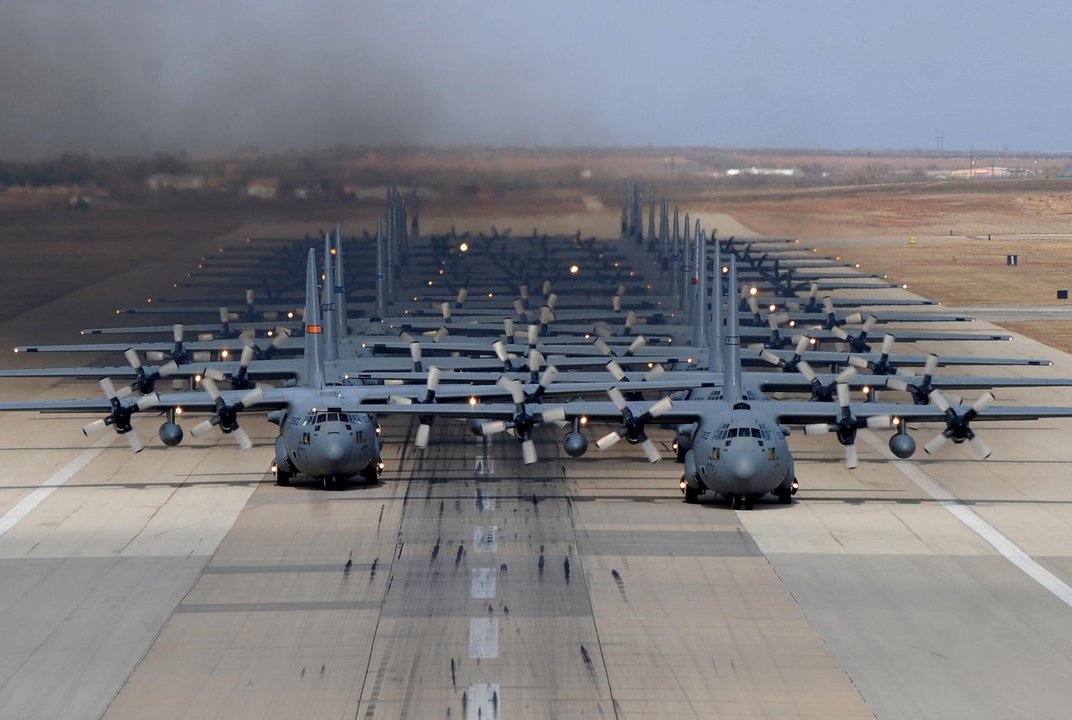
Based on the standard DC-9 passenger liner, 19 were converted for medical transport. Designed to carry up to 40 litter patients or the same number of ambulatory, or various combinations of the two, this is the only aircraft in the USAF specifically designed for this role. These aircraft are based at Scott AFB, Ramstein AB, Germany and Yokota AB, Japan in six Aeromedical Evacuation Squadrons (AES). The USN also operate 29 C-9B Skytrain II passenger/transports. A total of 3 additional VC-9C executive transports are operated by the USAF.
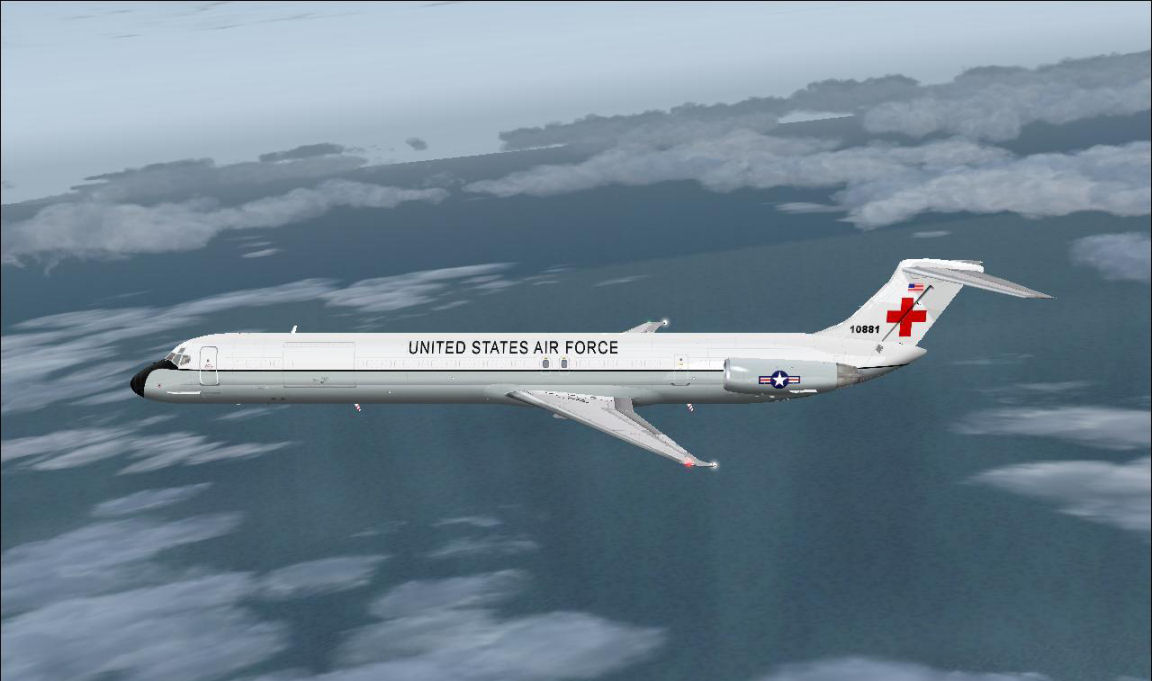
The USAF operates 44 of this civilian pattern twin engine Beechcraft in the transport version, although there are several other versions of this same aircraft in use in the Coast Guard, Navy, Army and in the USAF itself. There are no C-12 Squadrons as they are distributed through various bases and commands for general use.
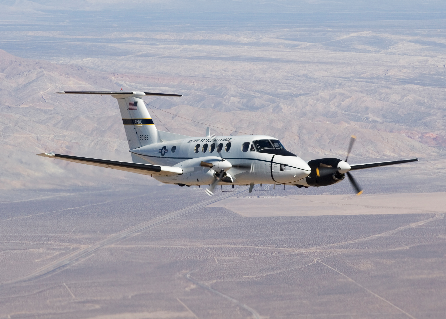
For VIP transport the USAF also uses a fleet of 13 Gulfstream III and IV executive jets out of Andrews AFB, Ramstein AB Germany, Guam and Yakota AB Japan. The USN, USMC and US Army also operate a fleet out these aircraft around the world.
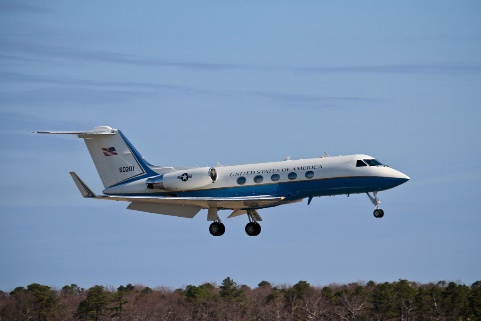
A fleet of 78 Learjet 35s augment both the VIP transport and medical evacuation fleets. Dispersed world wide for general use these aircraft are managed by two regular and one ANG squadrons in the 375th Air Mobility Wing based at Scott AFB, IL. Most numbered Air Force level commanders have these aircraft available for rapid world wide transport.
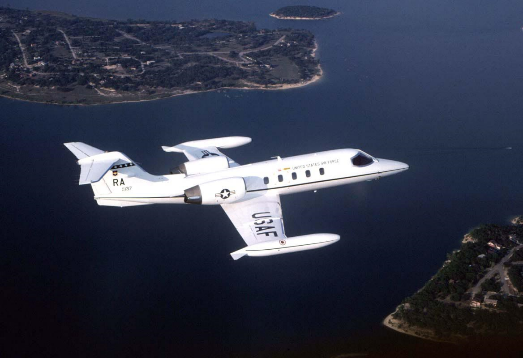
The Air National Guard operate 3 of these Boeing 727 aircraft for general transport. Based at Andrews AFB MD they are flown by 201st Airlift Squadron ANG.
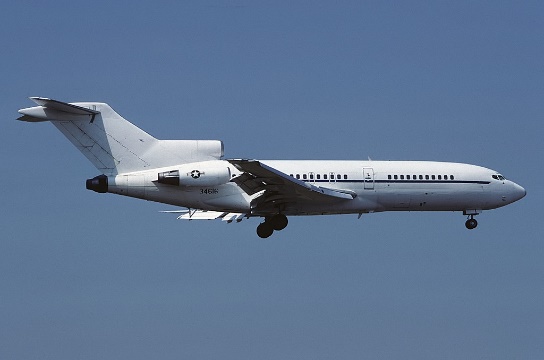
18 of these light transport aircraft is based at Zweibruken AB Germany providing rapid distribution of goods throughout Europe (EDSA European Distribution System Aircraft). The US Army National Guard also use a fleet of 44 of these aircraft and it is the only cargo aircraft the Army flies.
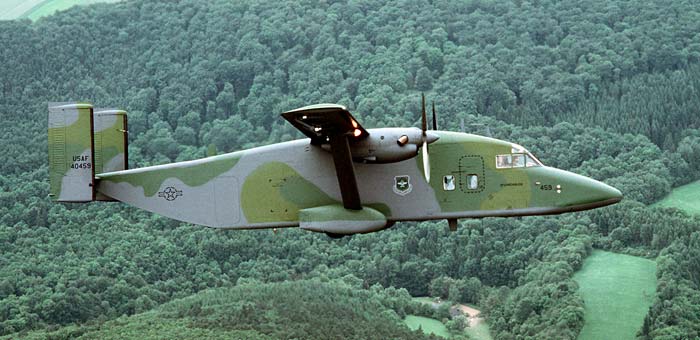
The Air National Guard operates 40 SA227 Metroliners of three different types for general transport with limited medical evacuation as a secondary role. These are based in most ANG wings and are not assigned to any particular squadron. The USN and US Army also operate C-26 aircraft.
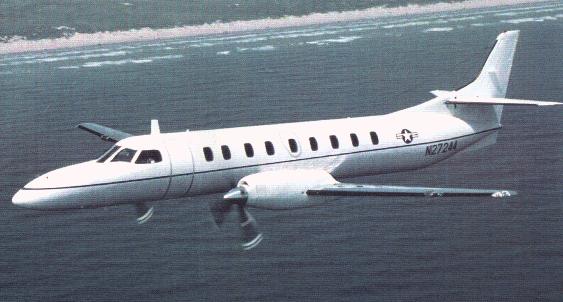
C-27ATo fill the role of a rugged medium lift transport the USAF procured 10 Italian G.222 to operate out of Howard AFB Panama. They are operated by 310th Airlift Squadron who also operate 6 C-130Hs.
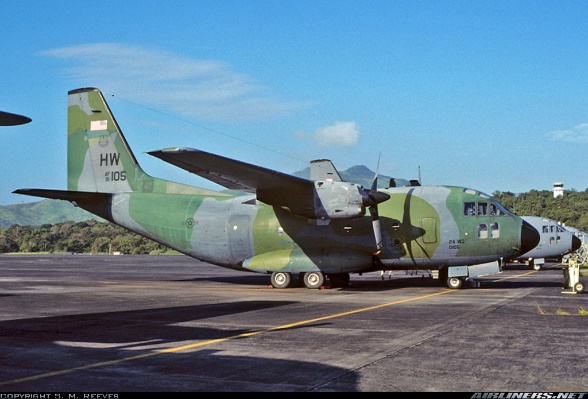
CRAF Civilian Reserve Air Fleet
This is a system of mobilizing commercial aircraft to meet military requirement. A complex and heavily politicized scheme but in an emergency, as demonstrated by the Gulf War, significant airlift resources are placed at the disposal of AMC. About 6-700 passenger airliners were committed to this program in 1994 for both cargo and passenger lift.